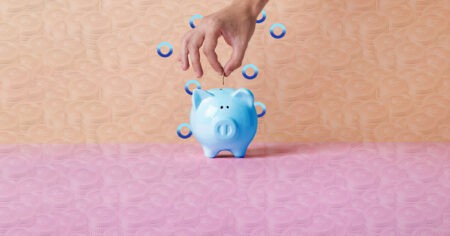When you have a small cushion of money, you need to make sure you put it in the best savings account. In Canada, there are many options for saving, whatever your needs. Here’s an overview of the different savings accounts, the fees associated with them and some of the best high-interest savings accounts in Canada.
Types of savings accounts in Canada
You may be surprised to learn that there are many types of savings accounts in Canada. Here’s a look at some of the most popular savings account options.
1). Tax-Free Savings Accounts (TFSAs)
If you’re looking to save on your taxes, you’ll want to consider a Tax-Free Savings Account, or TFSA. With a TFSA, anyone over the age of 18 can open an account and benefit from the ability to pay no tax on investments made in the account. In addition, the money can be withdrawn from the account tax-free.
2). High Interest Savings Account (HISA)
Want to make more money with your money? In that case, you’ll want to take a look at the High Interest Savings Account. With interest rates at record lows, some savings accounts are paying you almost nothing. However, some other banks and financial institutions pay out several times more than the average savings account. In general, you will find HISA at what are called neobanks. Neobanks are regulated financial institutions that exist solely online, without physical bank branches. A neobank’s lower overhead allows it to offer a higher interest rate on its savings accounts. Here are some of the best high-interest savings accounts available in Canada:
- EQ Bank – Savings Account Plus
- AcceleRate Financial – AcceleRate Savings
- Bridgewater Bank – Smart eSavings
- Motive Financial – Motive Savvy Savings
- Wealth One Bank of Canada – High Interest Savings
3). Youth Savings Account
Want to help your child get a head start on saving? You may want to consider opening a Youth Savings Account. With a Youth Savings Account, a child over the age of 12 and under the age of 18 can have their own savings account. In the case of the Youth Savings Account, the parent will be the joint account holder until the child turns 18.
4). Savings Accounts for Seniors
If you’re a senior citizen, you’ll want to take advantage of a senior savings account. A Senior Citizen’s Savings Account can provide some benefits. For example, some angel savings accounts may offer lower fees and lower balance requirements.
5). Money Market Deposit Account
Want to enjoy a higher savings rate? You can then turn to a high-interest savings account, called a money market deposit account. Yes, a money market deposit account does offer a higher rate. However, there are a few conditions that must be met in order to benefit from this higher rate. First, the money market deposit account will need to contain a minimum deposit, and you will need to maintain a specified minimum balance. A money market deposit account is an excellent idea if you intend to hold a large amount of cash over a period of time.
6). Certificate of deposit (CD)
If you don’t intend to use your cash for a while, you’ll want to take advantage of a certain type of savings account, called a certificate of deposit or CD. With a CD, you deposit a fixed amount of money that earns you a fixed rate of interest over a set period of time. Be aware that with a CD, there are penalties for early withdrawal.
Savings Account Rate of Return
When you have a savings account, it’s important to know your savings rate. The rate of return tells you how much you will receive each month on your savings. The interest rate on your savings account is expressed as an annual percentage rate or APR. For example, if you have $1,000 in a high-interest savings account with an annual percentage rate of 1%, your account will receive 0.083% per month, or about 83 cents per month.
Savings account fees
Be aware that most savings accounts have fees. Here are two of the most common fees you’ll find on a savings account.
1). Transaction fees
Some banks charge a transaction fee on your savings account. For example, if you withdraw money from your savings at an ATM, you may be charged a transaction fee. Some banks will allow you to make a few free transactions per month. Be sure to check your financial institution’s rules regarding transaction fees on savings accounts.
2). Monthly management fee
Some savings accounts have a management fee. Sometimes these fees are waived if the savings account has a certain balance. Be sure to check your bank’s rules regarding the monthly management fee on your savings account.
Deposit insurance
All savings accounts in Canada are protected by the Canada Deposit Insurance Corporation (CDIC). CDIC covers your savings account for up to $100,000 Canadian in the event of bank failure. If you have more than C$100,000 in a savings account, you may want to consider opening a second savings account at another financial institution. However, you should be aware that bank failures are sporadic these days, as financial instructions have strict risk controls in place.
Making the most of your Canadian savings account
Your savings account can help you store and access your cash easily. In some cases, you may benefit from a higher than usual savings rate. Be sure to compare savings accounts offered by several financial institutions. Chances are, you can find a savings account that perfectly suits your needs.
For the best high-interest savings account offers in Canada, read our guide:







